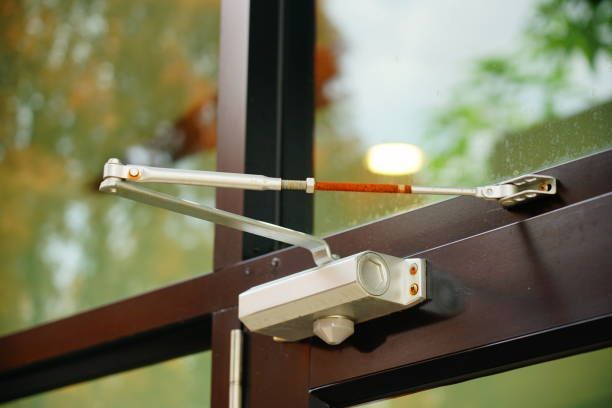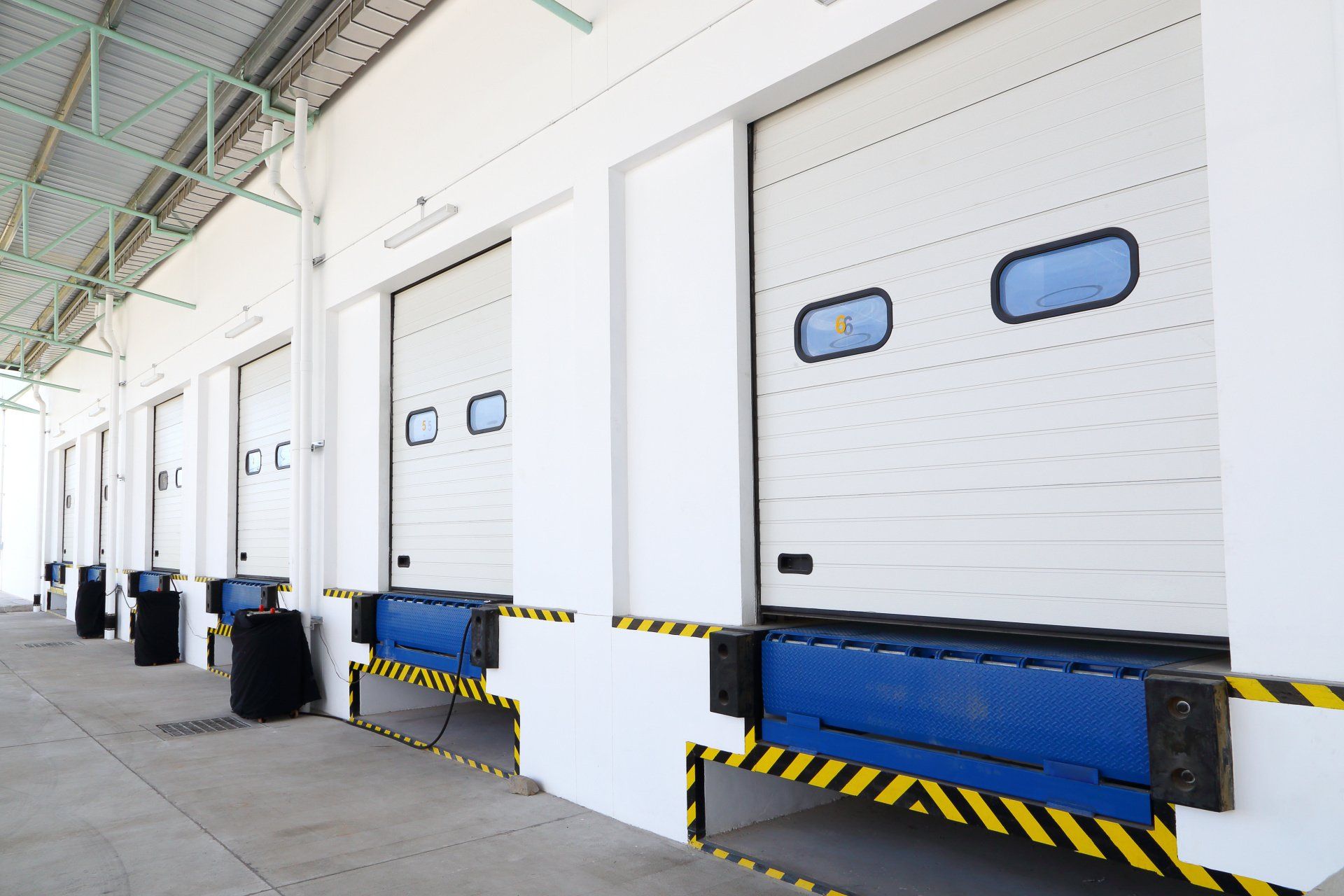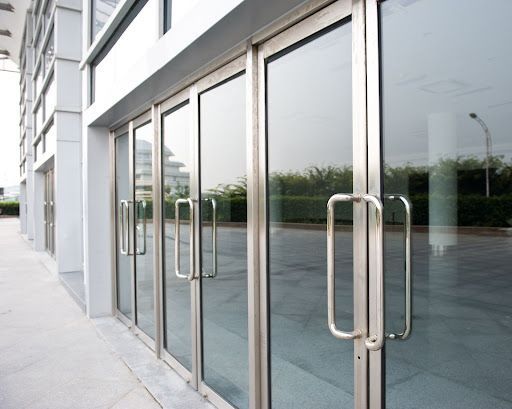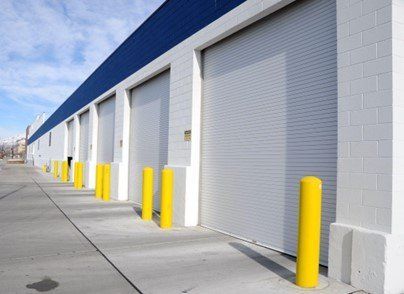Commercial Door Resources
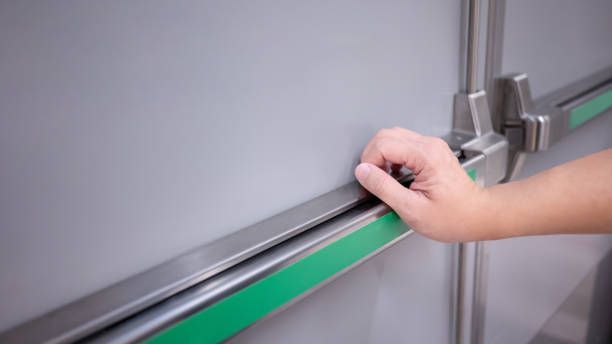
By Jerry Fields
•
16 Nov, 2023
When it comes to securing commercial spaces and ensuring swift emergency exits, understanding the distinctions between panic bars and exit bars is crucial. Despite their visual similarities, these door locking devices serve different purposes, each with specific mechanics tailored to its function. In this guide, we'll delve into the nuances of panic bars and exit bars to help you make informed decisions about the safety features for your industrial doors. What is a Panic Bar? A panic bar, often referred to as a crash bar or panic device, serves a critical role in emergency situations. Specifically designed for life safety compliance, a panic bar incorporates a spring-loaded metal bar positioned horizontally inside an egress-opening door. The mechanism is straightforward: when the lever is pressed, the bar unlatches the door, enabling swift egress. This design is instrumental in preventing delays and overcrowding during emergencies. Panic hardware is mandated by the 2009 edition of the International Building Code for specific occupancies, including Education (E), High Hazard (H), and Assembly (A) Occupancies, provided the maximum occupancy is 50 or more. What is an Exit Bar? In contrast, an exit device, also known as exit hardware or exit bar, features a bar situated across the interior of a door. The act of pushing this bar releases the door latch, facilitating easy egress. Standard exit devices are deemed appropriate for doors in occupancies other than E, H, and A, but only if the maximum occupancy is less than 50. Unlike panic bars, exit devices may require additional security measures such as a key or code for egress, as they do not adhere to the same stringent life safety standards as panic hardware. When Do I Need a Panic Bar vs an Exit Bar? To determine whether a panic bar or an exit bar is appropriate, it's essential to consider specific building codes and requirements. The distinction lies in the door's ability to 'dog' or hold the latch retracted. Panic hardware, typically installed on exterior, non-fire rated openings, can be 'dogged' to reduce wear and noise from frequent latching and unlatching. This feature enhances convenience but may not be suitable for fire-rated doors. In situations where a code mandates a fire-rated opening with an exit device, fire exit hardware must be used to ensure the door consistently latches when closed. These devices must adhere to the requirements of the UL 10C Standard for Safety Positive Pressure Fire Tests of Door Assemblies. Both panic and fire exit hardware must be listed to UL 305 Standard for Safety - Panic Hardware according to the code. To ensure compliance and suitability for a specific project, it is advisable to collaborate with experienced specification consultants. They can guide you in selecting devices that are properly listed with UL or Warnock-Hersey for their intended applications, ensuring the safety and functionality of your industrial doors.

By Jerry Fields
•
15 Nov, 2023
NFPA 80, also known as the "Standard for Fire Doors and Other Opening Protectives," regulates the maintenance and installation of devices and assemblies designed to protect openings in buildings from the spread of fire smoke. In this guide, we'll explore the key aspects of fire door inspection and rolling steel door fire safety. NFPA 80 Overview NFPA 80 serves as a comprehensive guide for Authorities Having Jurisdiction (AHJ), aiding them in the crucial task of ensuring that fire door assemblies conform to the necessary standards and maintenance protocols. Notably, the 2022 edition of NFPA 80 brought about substantial updates, with a particular focus on Chapter 11 (Rolling Steel Doors) and Chapter 13 (Service Counter Fire Doors). These changes have far-reaching implications for fire safety. One of the key alterations is the mandate for periodic inspections, stipulated under NFPA 5.2.4, which now necessitates annual assessments performed exclusively by trained rolling steel fire door systems technicians. These inspections play a vital role in upholding the safety and functionality of fire doors in various structures. Visual Fire Door Inspections Before conducting testing, visual inspections are crucial to identify potential hazards and ensure proper door operation. Key points to inspect include: Fusible links (if equipped), ensuring they are free from paint, dust, or grease, and that cables or chains are flexible and not twisted. The absence of any field modifications that void the door's label. Correct installation of slats, end locks, bottom bars, guide assemblies, and hoods. No missing or broken parts, with clearly visible and legible labels. Unobstructed drop release mechanisms and weights. No unauthorized attachments to the fire door assembly. Proper alignment and attachment of curtain, barrel, and guides. Secure mounting and assembly bolts, meeting manufacturer's requirements. Record of Maintenance Requirements It’s important to note that maintenance records for existing fire door assemblies must include the following information: Date of inspection. Name and address of the facility. Names of the individuals performing the inspection and testing. Company name and address of the inspecting company. Signature of the inspector of record. Individual records for each inspected and tested fire door assembly. Identification and location details for each fire door assembly. Type and description of each inspected fire door assembly. Verification of visual inspection and functional operation. A list of any identified deficiencies. Drop Testing Rolling Steel Doors During the acceptance testing of rolling steel doors, it is imperative to conduct a drop test not once but twice to verify their reliability. The primary objective is to confirm that the door can close automatically in the event of a fire emergency. This procedure should strictly adhere to the manufacturer's provided drop test instructions. To begin, the door must be fully open before initiating the drop test, and it should subsequently close entirely so that the bottom bar rests on the sill. To meet the required standards, the closing speed should fall within the range of 6 to 24 inches per second. Moreover, it is essential to assess each automatic closing option available for the fire door to ensure their proper functioning in critical fire safety scenarios. Resetting the Door Following the completion of the drop test, the next steps involve resetting the door in accordance with the manufacturer's specified instructions. To ensure the door's operational integrity, proceed to open and close it using standard operational procedures. This is crucial for verifying that the door functions as expected. As an additional layer of safety validation, conduct a second drop test to confirm that the door will indeed close properly in the event of a fire emergency. Once this secondary test is completed, the door should be reset once again, ensuring that it aligns with the manufacturer's reset guidelines. These steps collectively contribute to the reliability and effectiveness of the fire door system in critical situations. By following these guidelines and standards, you can help ensure the safety and functionality of fire doors and rolling steel doors in your building.
REQUEST ESTIMATE OR SERVICE CALL
Call the guys that care.
Industrial Door Company
10235 Systems Pkwy, Suite B
Sacramento, CA 95827
Contractor's License: 1118556
© 2024
All Rights Reserved | Industrial Door Company



